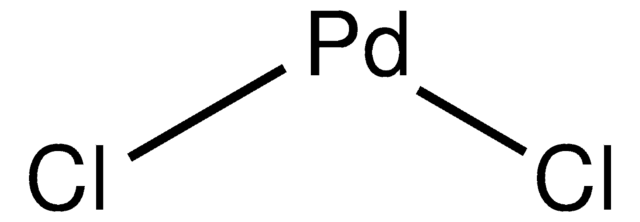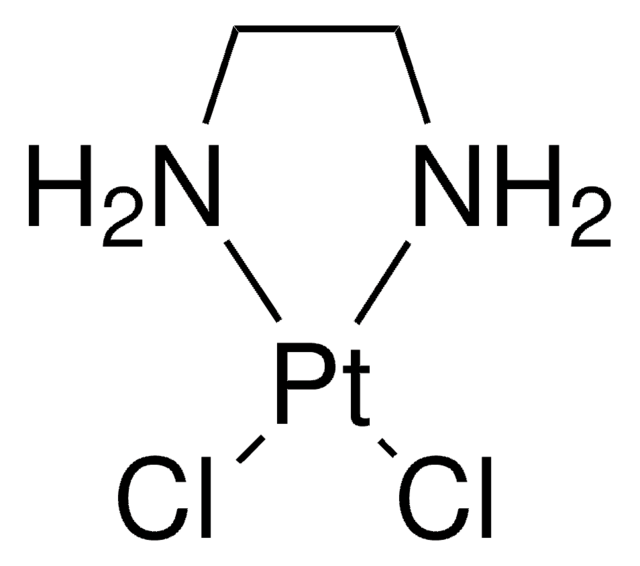520640
Platinum(IV) chloride
≥99.9% trace metals basis
Sinônimo(s):
Platinum tetrachloride
About This Item
Produtos recomendados
Nível de qualidade
Ensaio
≥99.9% trace metals basis
Formulário
powder
composição
Pt, 55-58%
adequação da reação
reagent type: catalyst
core: platinum
Impurezas
≤1000.0 ppm Trace Metal Analysis
pf
370 °C (dec.) (lit.)
densidade
4.303 g/mL at 25 °C (lit.)
cadeia de caracteres SMILES
Cl[Pt](Cl)(Cl)Cl
InChI
1S/4ClH.Pt/h4*1H;/q;;;;+4/p-4
chave InChI
FBEIPJNQGITEBL-UHFFFAOYSA-J
Procurando produtos similares? Visita Guia de comparação de produtos
Descrição geral
Aplicação
Platinumnanoparticles can be synthesized by reacting platinum (IV) chloride with Cyanobacteriumin an environmentally friendly method.
It can also be used as a dual catalyst forstereo- and regioselective glycosidations. Due to its ligand-bindingcapacity, platinum (IV) chloridehas an affinity for the glycosyl acceptor hydroxy group and forms the glycosidationproduct in β-configuration. It also enhances nucleophilicity differencesbetween hydroxy groups allowing regioselective glycosidation.
Palavra indicadora
Danger
Frases de perigo
Declarações de precaução
Classificações de perigo
Acute Tox. 3 Oral - Eye Dam. 1 - Resp. Sens. 1 - Skin Corr. 1B - Skin Sens. 1
Código de classe de armazenamento
6.1A - Combustible acute toxic Cat. 1 and 2 / very toxic hazardous materials
Classe de risco de água (WGK)
WGK 2
Ponto de fulgor (°F)
Not applicable
Ponto de fulgor (°C)
Not applicable
Equipamento de proteção individual
Eyeshields, Faceshields, Gloves, type P3 (EN 143) respirator cartridges
Escolha uma das versões mais recentes:
Já possui este produto?
Encontre a documentação dos produtos que você adquiriu recentemente na biblioteca de documentos.
Os clientes também visualizaram
Artigos
Plasmonic nanoparticles have unique optical properties that can be tailored to suit a variety of applications in the biotechnology1–8 and electronics9–16 industries.
Nossa equipe de cientistas tem experiência em todas as áreas de pesquisa, incluindo Life Sciences, ciência de materiais, síntese química, cromatografia, química analítica e muitas outras.
Entre em contato com a assistência técnica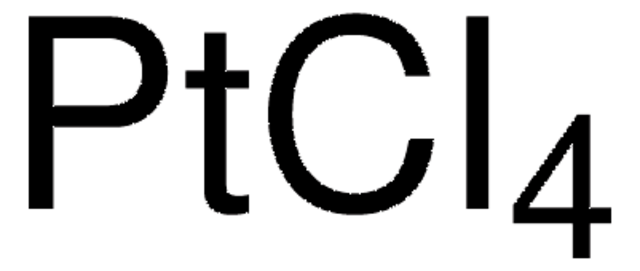
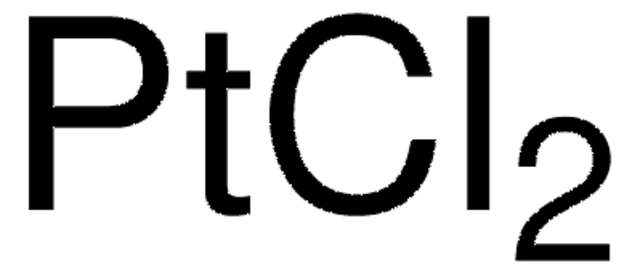






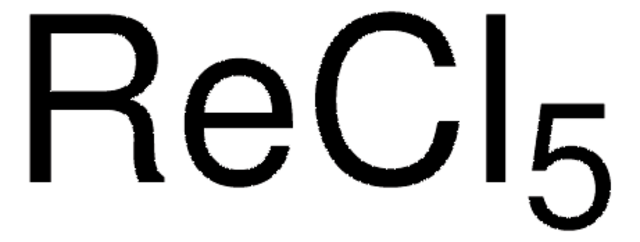

![[Pd(OAc)2]3 99.98% trace metals basis](/deepweb/assets/sigmaaldrich/product/structures/508/249/99a0ef2c-b77c-4d73-8ed9-0cca05b6b41f/640/99a0ef2c-b77c-4d73-8ed9-0cca05b6b41f.png)
